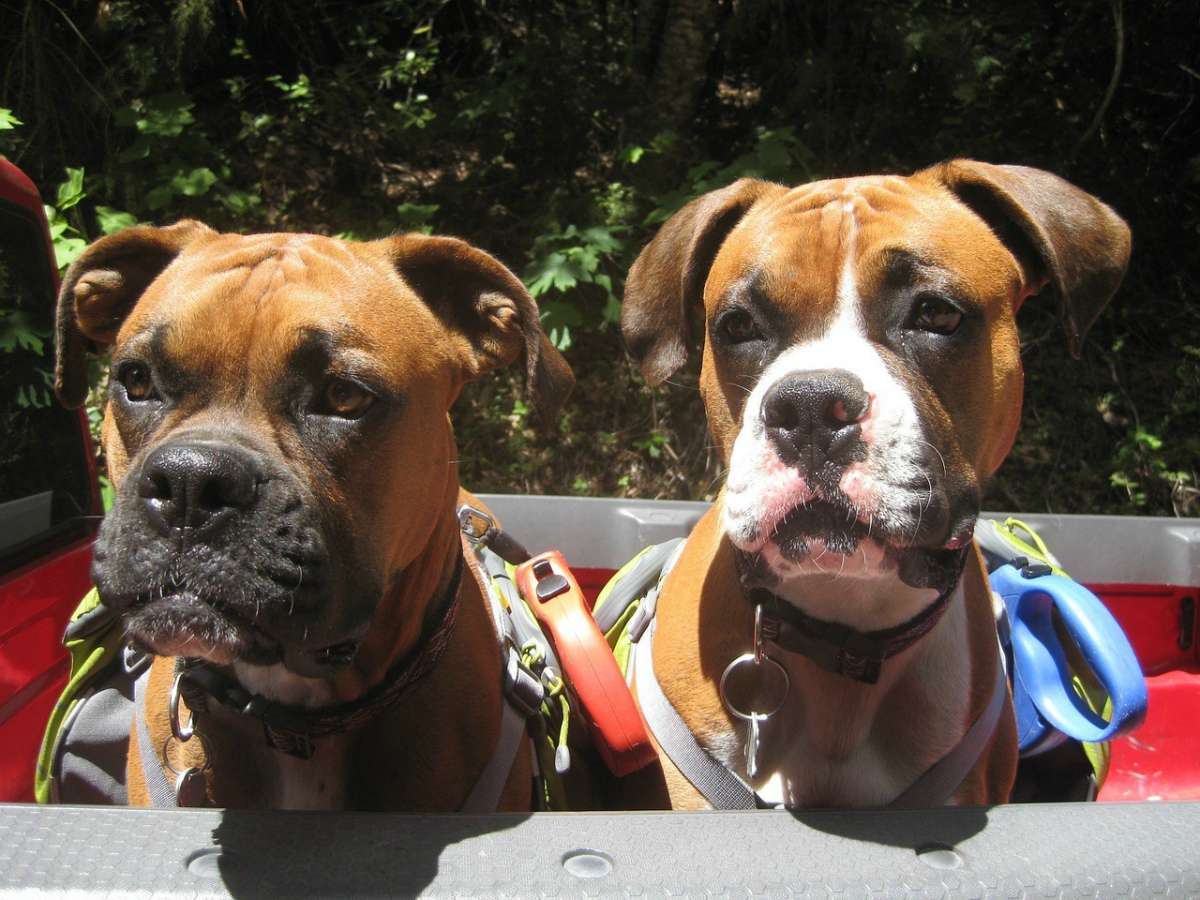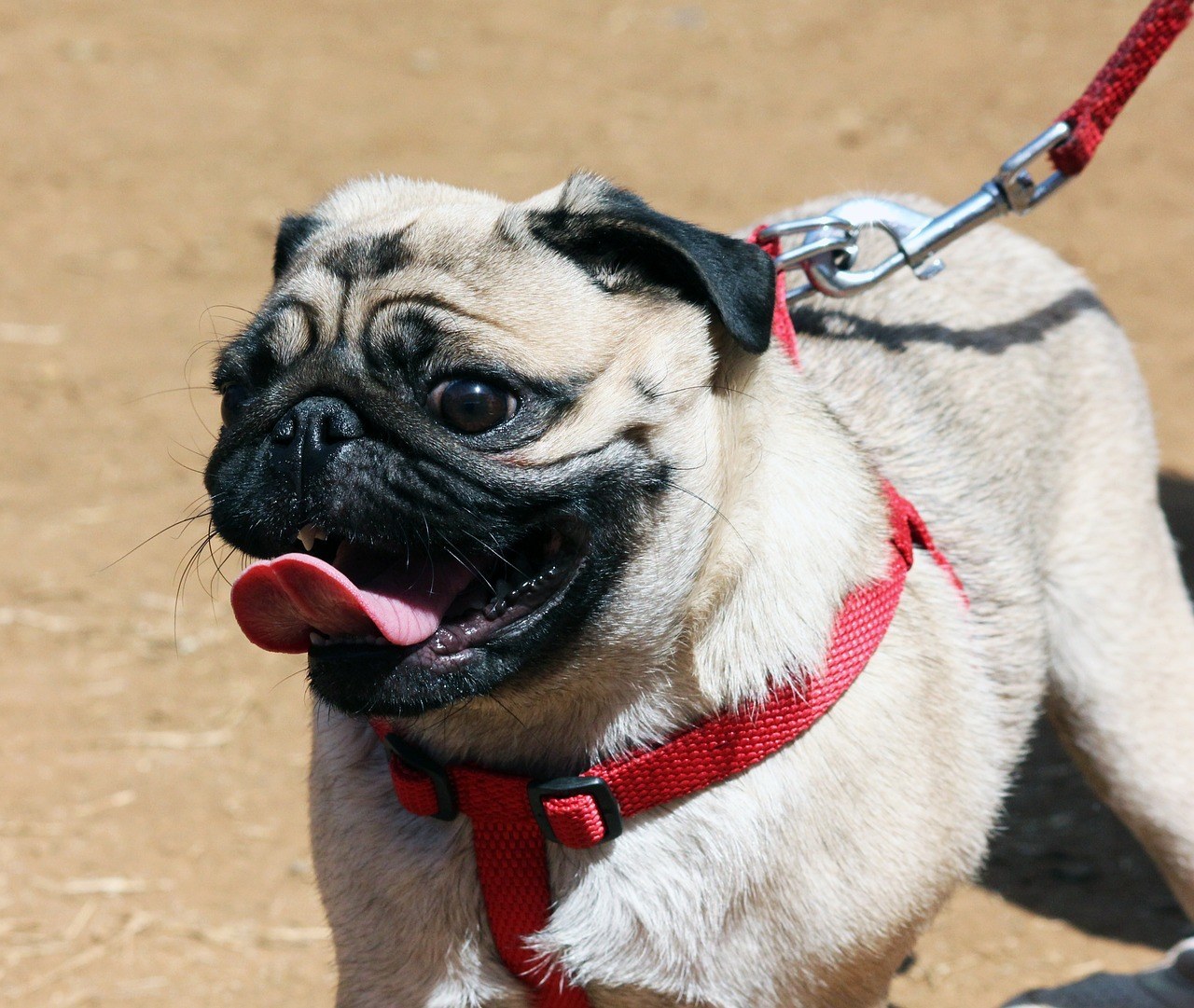
But before you take your pets out on a boat, or head out to the beach (or lake or river) with your four-legged friend, there are a few things you need to know about your dog’s breed. Not all dogs are designed for fun in the sun. In fact, some dogs can’t even swim, let alone paddle around in lukewarm water, which is why you need to understand your pet’s limitations.
Here’s a look at a few breeds of dogs that don’t do so well in the water…
[heading style=”2″ color=”#996633″ style_color=”#996633″]Boxers[/heading]
Boxers may have a tough time keeping their snout out of the water, and this is why it can be difficult for them to swim. Their conformation makes them naturally unsuited for water (although some with longer snouts will do just fine).

[heading style=”2″ color=”#996633″ style_color=”#996633″]Pugs[/heading]
Squishy faces, short noses, and a big middle make these guys a safety hazard in summer. They are prone to shortness of breath and if they panic, it could be a very dangerous day. Most of these pups do like water, but it’s very important to keep a close eye on them and provide plenty of breaks during swimming.
Severely brachycephalic dogs often have a tough time in the water. These are the smoosh-nosed dogs who sometimes have a tough time breathing when they are on land. Couple that with short legs and a giant chest, and you have a very non-sea-worthy dog that has no business being in the water. Of course, there will always be an exception to the rule, but before you bring your pug to the pool, be sure they are wearing a PFD for Dogs and keep a very close eye on them for exhaustion.

[heading style=”2″ color=”#996633″ style_color=”#996633″]Greyhounds[/heading]
On the opposite end of the spectrum from the brachycephalic dogs are the thin, sleek racing dogs. Greyhounds are often just as inept in water as the pug or bulldog. Because they have such thin legs and lanky bodies, they can often become unstable in the water. Smaller surface area means less buoyancy. So keep the PDF handy and make sure you know where your greyhound is all the time.
[heading style=”2″ color=”#996633″ style_color=”#996633″]Dachsunds[/heading]
With short legs and a long body, it’s little wonder that these pups are not designed for water. While they can be taught to swim, and some may take to it willingly, it’s important to keep a close eye on them during summer.
[heading style=”2″ color=”#996633″ style_color=”#996633″]Staffordshire Bull Terrier[/heading]
Generally “staffys” have a tough time in water due to large heads and smaller bodies. Many will panic (as in the case of our dog, Brock) if you put them in the water.
Never force your dog to get into the pool or lake – no matter what size they may be!
Their heavy, compact body make them adorable, but not water resilient. Some bull terriers love the water, but they can tire quickly and should never be left unattended. They need a PDF while in their in the water, and you should be nearby to help them out of the pool in the event they become distressed.
[heading style=”2″ color=”#996633″ style_color=”#996633″]Basset Hounds[/heading]
Short legs, long heavy bodies, and giant ears make them perfect for land-based hunting activities, but a dense bone structure makes water a problem for them. Keep them away from pools and large bodies of water.
Instead, try cooling them off with a cooling mat on their bed, hiding frozen treats around the yard (letting them give their nose a workout), and time to pass the heat of the day indoors.
Here are 5 Cooling Treats for Pets in Summer that are perfect for pets who prefer to stay out of the water.
[heading style=”2″ color=”#996633″ style_color=”#996633″]Great Danes[/heading]
On the opposite, opposite end is the giant Great Dane. Because they are so big and lanky, they often have to work harder to stay afloat and being so big, they can tire easily.
Be sure you stay nearby when you take your pet swimming. It can be a wonderful exercise that helps relieve stress in joints, but you want to keep a close eye on them because they have a harder time pulling themselves from the water and will become exhausted faster.
[heading style=”2″ color=”#996633″ style_color=”#996633″]Pekingese[/heading]
Because of their tiny paws and body, they may not do well in water. Even if they do get in the water, they may not be able to move through it well and they could easily panic due to their inability to keep their snout from the water. Be very aware of where your dog’s nose is when he’s swimming – failure to do so could result in a tragic end.
No matter what your beloved breed, there are simple rules that you must follow:
- Consider installing a pool alarm for pets. (They are also great for kids!)
- Place a Pool Alarm on your pet’s collar so you know the second your pet enters the water.
- Always know your dog’s limits.
- If you know your dog is not a great swimmer, have them wear a personal flotation device to keep them safe.
- Never have them “fetch” in the ocean without knowing the current, tide or the fact a riptide could be waiting for your pet.
- Any pet can quickly tire and drown while they are swimming, so be sure you know where your pet is at all times.
- Keep a PFD handy (there are some great ones you can buy for your dogs).
Just because a dog is mentioned as “swimming-challenged”, there are exceptions to every rule. Some dogs (no matter the breed) will take happily to the water and challenge the status quo. There are lots of ways to cool pets off during the hot summer
[heading style=”2″ color=”#996633″ style_color=”#996633″]General Guidelines for Breeds that are Challenged by Water:[/heading]- Stocky dogs with big heads
- Dogs with heavy coats that become soaked and pull them under
- Top-heavy, densely muscled breeds
- Brachycephalic dogs
- Dogs with short legs
